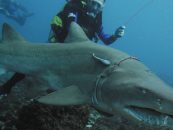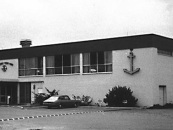Before civilizations formed, humans have been constantly adapting to the environment. History tells us that before the great inventions of medieval times, people have been using sophisticated machines and technology that brought about the changes in human behaviour and improvement of the human race.
Australia has a very old history. The Aboriginals have lived 250,000 years on this land, constantly and creatively adapting to the changes in climate and geography, among others. The culture of passing on of knowledge and stories through oral tradition is a factor for having little written documents relevant to their way of life. But although limited, the stories that have been passed on through to the present day are rich in history and experience.
For the Bundjalung and Yugambeh peoples, the waterways life (that we are privileged to still have on the Gold Coast) was not mainly for recreation. They were used for hunting food, trading with other peoples on other islands, for transporting goods and people, among others. Historical records would show us that the dugout canoe, also known as the gundal in Bundjalung and Yugambeh, was the type of boat used in the Southeast Queensland region.
The Nerang River would have been full of fish and crabs as food to catch for the communities that lived around it. Moving about on the river was also a daily activity. But more than a lifestyle, the rich maritime history of the area includes the ancient First Nations trade route between the Nerang River and Stradbroke Island for thousands of years.
Benjamin Allmon, a Gold Coaster and an author, embarked on a three-day journey following this trade route. As part of his research on the maritime trade history of the First Nations, he wanted to go beyond the facts. He wanted to re-enact and experience for himself the waterways life before modern-day conveniences have taken over.
The journey began in the forests of the Gold Coast to find the tree from which the gundals would be built. Kyle Slabb, a knowledge-holder of traditions and a Bundjalung-Yugambeh canoe-maker, along with canoeing expert Mark Matthews, and their sons, built the two canoes and paddles using trees from the forests of the Gold Coast. In January this year, they launched the canoes during a Nyalangi Ceremony (“We will see you again”), a farewell celebration for the crew. Together with various Gold Coast rowing teams – outrigger and dragonboat rowers – Benjamin and Kyle paddled in these traditional canoes from the Nerang River through the Broadwater and Moreton Bay, using only handcrafted paddles and traditional spears for fishing along the way, with the intention of exchanging bunya (nuts) for eugarie (pipis) with North Stradbroke Island.
The messages of inclusion and of the connection between land and sea were very clear that morning, as the community gathered together to witness a unique event that is rarely shared outside the Bundjalung and Yugambeh peoples. Paddling through powerboats and jet skis, with high-rises as the backdrop, was a surreal event that makes one pause and reflect on the journeys that the First Nations peoples had taken for many thousands of years.
The rest of us have yet to hear, see and read of Benjamin, Kyle, Mark, and their sons’ experiences of their own journey, when they launch the Saltwater Story book and the documentary film on 18 May at the Home of the Arts. Tickets can be purchased here https://hota.com.au/cinema/the-saltwater-story/.
By Roselle Tenefrancia
Related Stories:
Michael Aird’s story: https://boatgoldcoast.com.au/michael-aird-my-life-on-the-waterways/
Aboriginal boating in SEQ: https://boatgoldcoast.com.au/aboriginal-boating-around-southeast-queensland/
Indigenous use of coastal resources: https://boatgoldcoast.com.au/indigenous-use-coastal-resources/



























